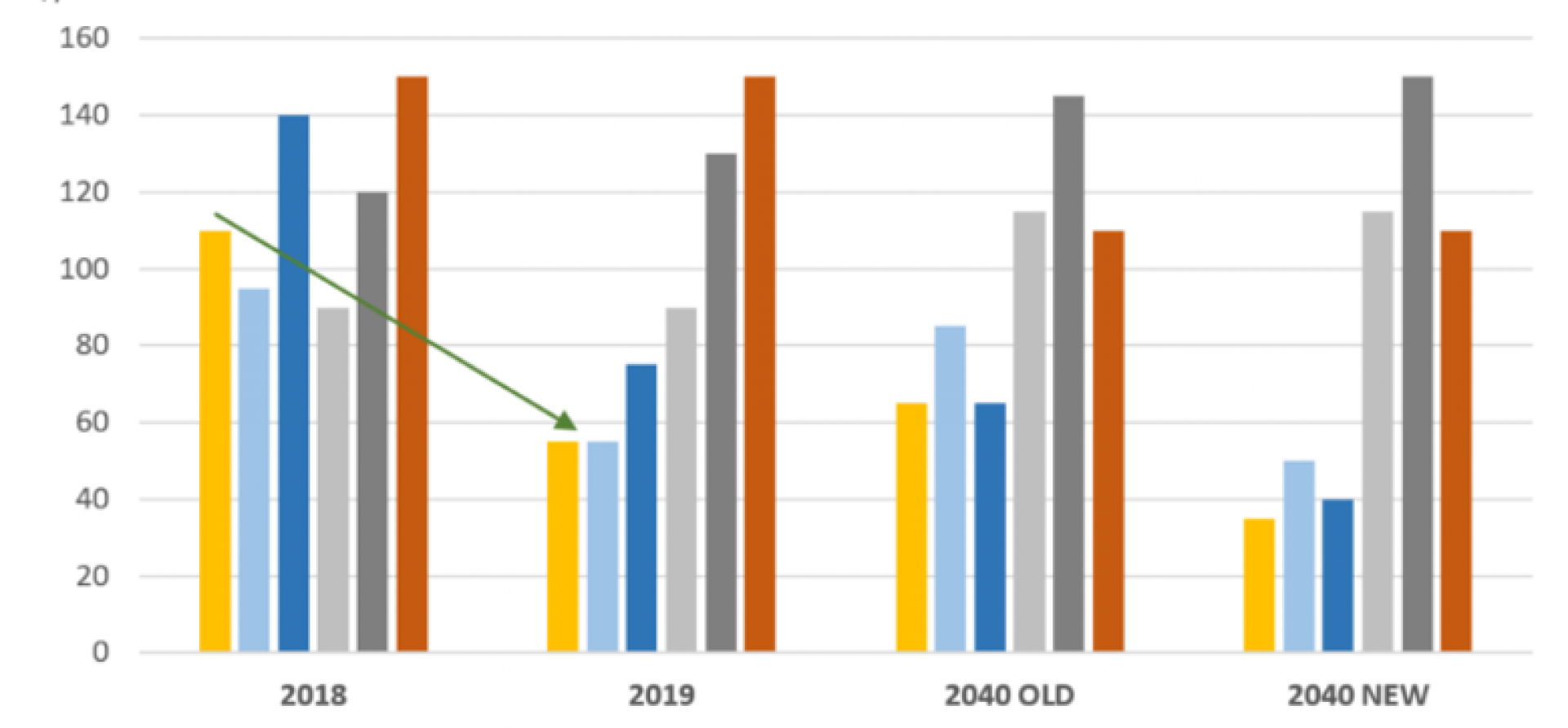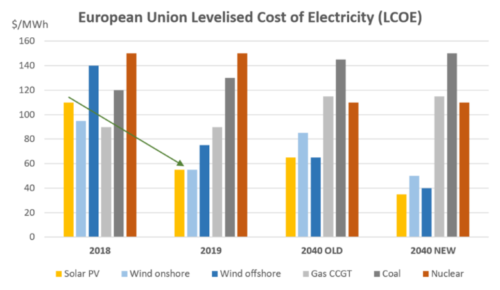IEEFA: IEA playing ‘catch-up’ with falling renewables costs, halving solar estimates

The IEA halved the cost of solar power in Europe, in a single year, in its annual World Energy Outlook, published this month, showing just how far it is trailing the market and how fast solar costs are plunging.
Moreover, it shows both onshore wind & solar PV were cheaper in 2019 than the IEA had projected a year ago for 2040. In other words, renewables costs reductions are now already beating previous forecasts for 2040… an outrageous 21 years ahead of expectations! That speaks for itself…
This is the first time the IEA are acknowledging that solar and wind are the cheapest form of power generation in Europe. While much commentary around the hefty report has focused on the perceived impact of the Covid-19 pandemic on energy demand, and in particular the timing of ‘peak oil’, the fact that the IEA has drastically slashed its renewables cost assumptions in just one year seems to have slipped under the radar.
Many in the European energy industry have known for a few years now that renewables are least-cost, and as a result may have been disregarding IEA data in favour of more progressive sources. In any case, it’s worth highlighting the extent of the IEA’s recent revision which hints at the momentous change of direction that is underway across our energy system.
While this latest outlook shows that the transition is finally being acknowledged – for the first time the IEA have outlined a ‘net-zero by 2050’ case – we can already see from their Stated Policies Scenario (SPS) that it remains behind the curve. Perhaps this is understandable given the ongoing pace of change, including ever-cheaper batteries driven by the growing EV market and the mobilisation of multi-lateral efforts towards a future ‘green hydrogen’ economy.
Regarding hydrogen, climate change author Chris Goodall recently noted in his newsletter that the IEA’s SPS only includes about 3 million tonnes of green hydrogen production in 2040, while the EU’s hydrogen strategy is already targeting 10 million tonnes in the EU area alone by 2030 – ten years earlier.
Policy-driven transformation will also need to be updated to reflect China’s recent pledge to be net-zero by 2060 and a possible step change in US direction on climate change, depending on the outcome of the upcoming election.
Looking ahead to IEA’s World Energy Outlook 2021, expect to see a full net zero scenario (this year it has only been introduced as a supplementary case to the Sustainable Development Scenario (SDS), meaning it does not come with the full set of data that accompanies the two main scenarios, SDS and SPS), as well as even cheaper renewables, more storage capacity and much more aggressive expansion of low-carbon hydrogen.
Arjun Flora ([email protected]) is an IEEFA energy finance analyst.
Related Items:
IEEFA: Green vs. brown – clean energy must play a greater role in economic recovery from COVID
IEEFA: From zero to fifty, global financial corporations get cracking on major oil/gas lending exits
IEEFA: Renewables continue to break records despite COVID-19
















